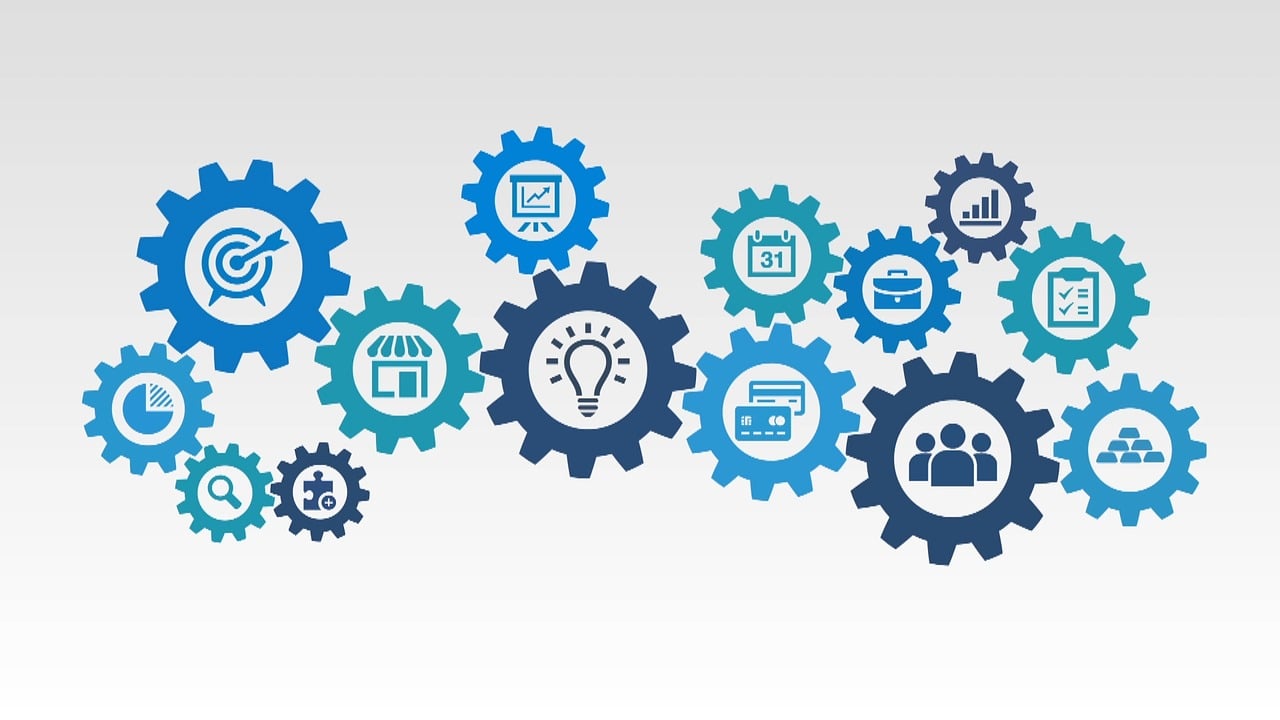The mix of computerized reasoning (artificial intelligence) into business tasks denotes a groundbreaking jump in the corporate world, one that smoothes out processes, improves efficiency, and powers development. The consistent walk of computer-based intelligence applications has turned into a strong main impetus forming the fate of businesses internationally.
Changing Client Communications

Client assistance and commitment are at the cutting edge of artificial intelligence applications in organizations. Simulated intelligence-controlled chatbots and menial helpers, driven by normal language handling (NLP) capacities, are progressively taking care of client requests and backing errands. They offer moments, every minute of every day help to answer questions, investigate issues, and guide clients through complex cycles. Organizations like IBM with its Watson Right Hand and Google with its Dialogflow have been vital in this change, preparing for nonstop client commitment without the customary above expenses of human-fueled assistance work areas.
Past simple text-based connections, artificial intelligence is customizing client commitment by foreseeing needs founded on past cooperations. Proposal motors, for example, those utilized by Amazon and Netflix tailor individual substance and item ideas, upsetting the advertising and retail scenes. Client Relationship The executives' (CRM) frameworks have additionally been upgraded by man-made intelligence to furnish organizations with additional significant bits of knowledge into client ways of behaving, empowering customized advertising techniques and proactive client maintenance endeavors. AI's impact on operational management is profound.
Streamlining Operations and Management

In-store network coordinated factors, computer-based intelligence frameworks anticipate stock requirements, oversee restocking, and upgrade conveyance course arranging. New businesses and large companies use AI calculations to gauge request patterns, limiting stock expenses and boosting deals. This improves stock administration as well as altogether eliminates squandering, driving organizations towards additional maintainable practices.
Much more multifaceted activities, for example, booking and consistency are progressively under man-made intelligence. By investigating complex informational indexes, computer-based intelligence frameworks can enhance the booking of staff and assets, guaranteeing that organizations run proficiently. They likewise track changes in legitimate guidelines, assisting organizations with remaining consistent with important regulations and norms, and moderating fines or lawful activity gambles.
Maybe one of the best qualities of artificial intelligence lies in the domain of huge information examination. Companies generate massive amounts of data, and AI systems are crucial in converting this into actionable insights. Through predictive analytics and advanced algorithms, businesses can make informed decisions about nearly every aspect of operations from strategic planning to financial investments. AI tools enable companies to identify trends, forecast business outcomes, and derive strategic actions that align with long-term business goals.
Financial institutions have harnessed the power of AI in risk analysis, fraud detection, and personalized financial planning for clients. Tools like Kensho and Accern are reshaping the finance industry by offering AI-driven analytics that provide investment insights and market forecasts previously unattainable by human analysts due to the sheer volume and complexity of financial data.
Revolutionizing Product Development and Manufacturing
In product development and manufacturing, AI is reshaping what is possible. Using generative design software, designers and engineers input design goals and parameters into AI algorithms, generating a range of optimal designs. The AI considers countless possibilities, tests simulations, and quickly iterates designs to enhance product functionality and manufacturing efficiency.
In the realm of smart manufacturing, AI systems are pivotal in predictive maintenance, detecting potential equipment failures before they occur, and preventing costly downtime. Robotics and automation, guided by AI, are increasingly common on production floors, performing tasks with precision and efficiency that outmatches human capability, especially in dangerous or highly repetitive work environments.
The Ethical and Workforce Considerations
However, with the rise of AI comes the need to address the ethical implications and potential impact on the workforce. There are concerns surrounding job displacement as AI systems take over roles traditionally occupied by humans. Businesses are called upon to evaluate the ethical considerations in data usage, bias in AI algorithms, and the broader societal implications of their AI deployments.
Emphasis on reskilling and upskilling the existing workforce is gaining prominence as jobs evolve with AI integration. Companies need to foster a culture of continuous learning, ensuring employees stay relevant and can work alongside sophisticated AI systems rather than be replaced by them.
Balancing AI with Human Touch
The juxtaposition of AI and the human element within a business is delicate. Businesses that successfully integrate AI solutions do so by finding the right balance, and leveraging machines for efficiency and scale while retaining the irreplaceable nuances of human creativity, empathy, and strategic judgment. AI tools augment human workers but cannot replace the nuanced understanding and interpersonal skills that are integral to business success.
Looking Ahead
The trajectory of AI within business suggests even more intricate integration in future operational facets. With advancements in AI reliability, explainability, and ethically-aligned design, its potential applications will continue to expand. Businesses that strategically adopt AI stand to not only gain a competitive advantage but also set new standards for innovation and efficiency.
The rise of AI in business operations is not just an ongoing trend; it is a paradigm shift that brings with it opportunities, challenges, and profound implications for future work. As AI systems become more sophisticated and ingrained in daily operations, the businesses that maximize their potential while navigating the human aspects of their workforce will likely emerge as leaders in the new technological era.
The Interplay with Emerging Technologies
AI is not an isolated advancement; it works in synergy with other emerging technologies. The Internet of Things (IoT), 5G telecommunications, blockchain, and augmented reality (AR) are all converging with AI to create new possibilities:
- IoT and AI: The extensive networks of connected devices generate vast datasets. AI analyzes this IoT-generated data to optimize processes, anticipate equipment issues, and create more interactive and responsive products and services.
- 5G and AI: With the advent of 5G, the speed and responsiveness of network-based AI applications will be unprecedented. This could revolutionize mobile AI applications and enable the analysis and transfer of massive data sets in real-time.
- Blockchain and AI: Blockchain can enhance AI's security and data tracking capabilities. AI, in turn, can manage and analyze blockchain transactions more efficiently than humanly possible, potentially improving everything from secure transactions to supply chain authenticity verification.
- AR and AI: In retailers, AR can enrich the customer experience by allowing virtual try-ons, and AI can personalize recommendations in real time based on customer reactions and interactions.
AI-Driven Business Model Innovation
Business models themselves are being redefined by AI. Subscription services, dynamic pricing, and as-a-service offerings are being optimized using AI’s predictive capabilities. This data-driven approach to value proposition, customer relationship, and revenue streams is carving out new market niches and disrupting established industries.
The Future of Work: Collaboration between Humans and AI
The nature of work and collaboration is evolving. AI can take on repetitive or hazardous tasks, allowing human employees to focus on creative, strategic, and interpersonal tasks that add greater value. The collaboration between humans and AI has the potential to unlock creativity and innovation, as routine work is offloaded to AI systems.
For example, in healthcare, AI is assisting with diagnostic processes, and analyzing medical imaging with greater speed and accuracy than before, but it is the doctors and medical staff who provide the care, applying their expertise and empathic communication to patient treatment plans.
Similarly, in creative industries, AI can assist with enhancing production capabilities. For example, AI-driven analytics can inform scriptwriters and producers about content trends, but the storytelling and emotional engagement with the audience remain distinctly human tasks.
Preparing for a Responsible AI Future
For all the strategic advantages that AI confers, its deployment must be governed by an ethical framework. Privacy concerns, fairness, accountability, and transparency guidelines must be established to govern how AI systems are created and used. This includes addressing algorithmic bias, and ensuring that AI decisions do not discriminate against certain user groups.
Furthermore, the dialogue on AI governance is becoming international, with various countries and global organizations seeking to set standards that ensure AI is developed and used responsibly and that benefits are distributed equitably across society.
Conclusion: Embracing the AI Revolution Responsibly
To sum it up, AI is much more than a technological tool; it is a transformation catalyst that requires careful consideration and strategic integration into business models. Companies must not only address the technical aspects of AI adoption but must also actively manage the workforce transition, ethical considerations, and the broader societal impact.
The AI revolution is well underway, and businesses that harness their full potential while addressing the inherent challenges will not only thrive but also set the benchmark for a future where technology and humanity intersect in meaningful and sustainable ways.


You must be logged in to post a comment.